The Definitive Guide to Visiting the Pagoda at Haiqing Temple
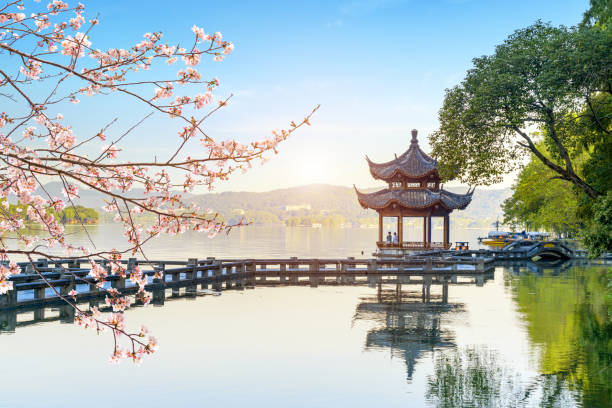
An Essential Guide to Visiting Pagoda At Haiqing Temple
Nestled amidst the lush greenery of Songyang County, the Pagoda at Haiqing Temple stands as a remarkable testament to centuries of history and architectural ingenuity. Often referred to as the “Eastern Leaning Tower,” this stunning wooden structure leans at an eccentric angle of over two meters, reminiscent of its more famous counterpart in Pisa, Italy. Rising majestically to a height of 38.32 meters, the pagoda is not just an eye-catching landmark but a symbol of resilience, having withstood the test of time since its origins in the 9th century during the Northern Song Dynasty.
In this essential guide, you will explore the fascinating history of the Haiqing Temple and its iconic pagoda, uncover tips for making the most of your visit, and discover nearby attractions that enhance your experience. Whether you’re a history buff, an architecture enthusiast, or simply seeking a serene escape in nature, the Pagoda at Haiqing Temple offers something for everyone. Prepare to be captivated by its charm, and embark on a journey through time as you visit this extraordinary site.
In This Guide
- An Essential Guide to Visiting Pagoda At Haiqing Temple
- The Rich History and Legends of Pagoda At Haiqing Temple
- Main Highlights: What You Absolutely Can’t Miss
- Planning Your Visit: A Practical Guide
- Tickets: Prices, Booking, and Tips
- How to Get There: A Complete Transportation Guide
- Local Cuisine and Accommodation Nearby
- Frequently Asked Questions
- Final Thoughts on Your Trip
The Rich History and Legends of Pagoda At Haiqing Temple
A Journey Through Time: The Pagoda at Haiqing Temple
Nestled within the serene landscapes of Songyang County, the Pagoda at Haiqing Temple (海清寺塔) stands as a remarkable testament to China’s rich cultural heritage. With roots tracing back to the 9th century, this architectural marvel encapsulates centuries of history, legends, and spiritual significance.
Origins in the 9th Century
The origins of the Haiqing Temple and its iconic pagoda are shrouded in time, dating back to the Northern Song Dynasty. This era was marked by significant advancements in art, literature, and philosophy, contributing to the temple’s establishment as a crucial spiritual site. Originally constructed as a Buddhist temple, Haiqing Temple served as a sanctuary for monks and pilgrims seeking solace and enlightenment.
The Leaning Wonder: A Historical Perspective
Over the centuries, the Pagoda at Haiqing Temple has weathered numerous storms—both natural and man-made. Its wooden structure, representative of the Northern Song architectural style, has endured the ravages of time, leading to its infamous tilt. Today, the pagoda leans at an angle of 2° 12″, earning it the affectionate nickname of the “East Pisa Leaning Tower.” Standing at an impressive height of 38.32 meters, its distinctive slant adds to its charm, drawing visitors from around the world.
Reconstruction and Preservation
Recognizing the need to preserve this historical landmark, a major reconstruction effort was initiated in 1983. The restoration, which was completed in 1991, employed traditional techniques and materials, ensuring that the pagoda retained its authentic character. Surrounded by lush greenery, the pagoda and its adjacent temple complex create an idyllic setting, inviting visitors to immerse themselves in the tranquil atmosphere.
Legends and Lore
The Pagoda at Haiqing Temple is not merely a relic of the past; it is also a canvas for legends that have been passed down through generations. One popular tale recounts how the pagoda was built by a devoted monk who sought to reach the heavens. According to local folklore, he prayed fervently for divine guidance, and in response, the pagoda’s structure was imbued with a celestial blessing, allowing it to withstand the test of time.
Another enchanting legend speaks of a benevolent spirit that watches over the pagoda. It is said that those who visit the site with pure intentions are granted protection and good fortune. Many pilgrims come to pay their respects, lighting incense and making offerings in hope of receiving blessings from the spirit that guards this sacred place.
A Spiritual and Cultural Beacon
Today, the Pagoda at Haiqing Temple continues to be a vibrant center for spiritual practice and cultural exchange. Visitors are invited to explore the temple grounds, where they can witness daily rituals, attend meditation sessions, and learn about the rich traditions of Buddhism. The site is not only a visual masterpiece but also a living testament to the enduring legacy of faith and community.
In conclusion, a visit to the Pagoda at Haiqing Temple is more than just a journey through history; it is an opportunity to connect with the spiritual essence of China. As you stand before this leaning wonder, take a moment to reflect on the stories it holds and the countless souls it has touched throughout the centuries.
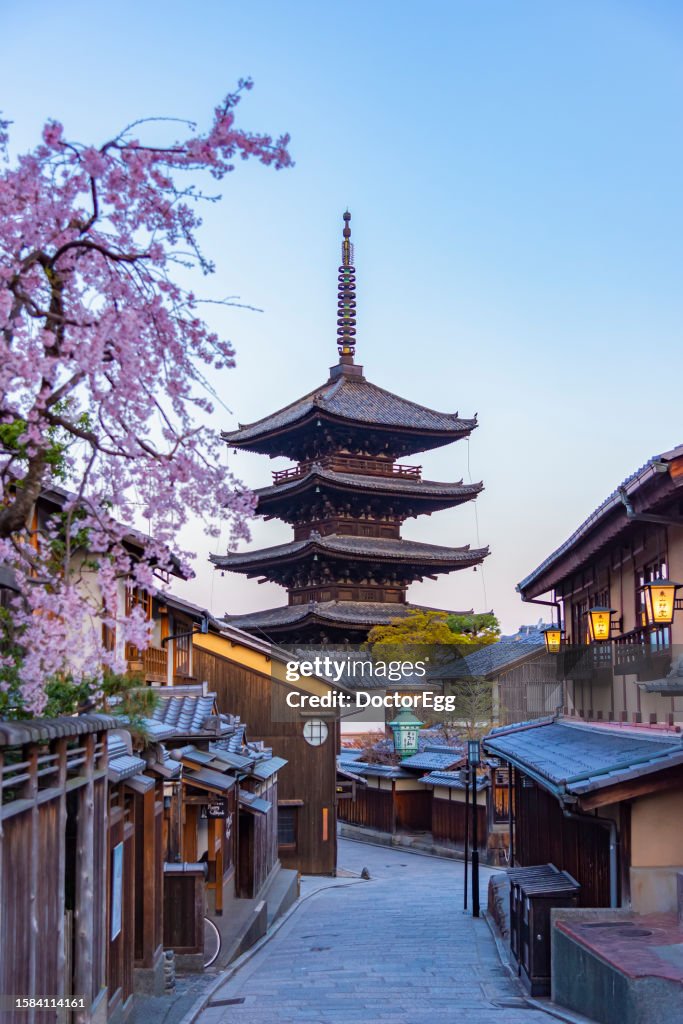
Pagoda At Haiqing Temple.
Main Highlights: What You Absolutely Can’t Miss
1. The Tower Itself: A Marvel of Architecture
Standing tall at 38.32 meters, the Yanqing Pagoda is a stunning example of ancient craftsmanship from the Northern Song Dynasty. Its distinctive tilt, measuring an eccentricity of over one meter, has earned it the playful nickname “The East Pisa Leaning Tower.” As you approach, take a moment to appreciate the intricate wooden structure that has stood resilient against the elements for over a millennium. To fully capture its beauty, visit during the golden hour when the light casts enchanting shadows.
2. Lush Surroundings: Nature’s Embrace
Surrounded by verdant trees and serene landscapes, the area around the pagoda offers a peaceful escape from the hustle and bustle of modern life. The lush greenery not only enhances the pagoda’s beauty but also provides a perfect backdrop for photography enthusiasts. Bring along a picnic and enjoy a quiet afternoon under the canopies, taking in the tranquil atmosphere.
3. Historical Significance: A Journey Through Time
The roots of Yanqing Pagoda stretch back to the 9th century, making it a vital piece of Songyang’s cultural heritage. As you explore, consider the countless pilgrims and visitors who have walked these grounds before you. An informative plaque near the entrance provides insights into its history and the significance of the temple, enriching your understanding of this ancient site.
4. Architectural Details: Intricate Craftsmanship
Take a closer look at the pagoda’s detailed carvings and architectural elements that reflect the artistic styles of the time. The pagoda’s design features elements typical of traditional Chinese architecture, such as its tiered roof and decorative motifs. Spend some time observing the craftsmanship and perhaps sketching the details to remember your visit.
5. Nearby Attractions: Explore More
Extend your visit by exploring the nearby Huangjia Courtyard and Lanxuejing Scenic Resort, both within a short distance from the pagoda. These sites offer additional glimpses into local history and stunning natural scenery. A day trip could seamlessly combine these attractions, providing a richer experience of the region.
6. Ideal Visiting Times: Plan Your Trip
To avoid crowds and enjoy a more intimate experience, consider visiting during weekdays, especially in the early morning or late afternoon. This timing not only allows you to appreciate the pagoda’s beauty in solitude but also offers the best conditions for photography, with the soft morning light or the warm glow of sunset.
7. Accessibility and Practical Tips
The Yanqing Pagoda is located in Sita Lower Village, Songyang County, easily accessible from major transport hubs. Wear comfortable shoes as the terrain may be uneven, and don’t forget to bring a water bottle and some snacks for your exploration. Lastly, a respectful attitude is encouraged, as the site is a place of historical and spiritual significance.

Pagoda At Haiqing Temple.
Planning Your Visit: A Practical Guide
Discovering the Pagoda at Haiqing Temple: Your Essential Guide
Nestled in the scenic surroundings of Songyang County, the Pagoda at Haiqing Temple (海清寺塔) is a remarkable historical site that draws visitors with its unique architectural charm and serene atmosphere. Whether you’re a history enthusiast or simply looking for a tranquil spot to soak in the beauty of nature, this guide will help you make the most of your visit.
Best Time to Visit
The ideal time to explore the Pagoda at Haiqing Temple is during the spring (March to May) and autumn (September to November) months. During these seasons, the weather is mild, making it perfect for sightseeing. The surrounding foliage adds vibrant colors in spring and stunning hues in autumn, enhancing the beauty of the pagoda. If you prefer fewer crowds, consider visiting on weekdays.
Recommended Itinerary
Morning:
– Arrive early to enjoy the serene atmosphere.
– Start with a leisurely stroll around the pagoda and take in the beautiful architecture.
– Spend some time exploring the lush greenery surrounding the site.
Lunch:
– Head to a nearby local restaurant to sample traditional Songyang cuisine.
Afternoon:
– Visit the nearby attractions, such as Huangjia Courtyard and Mao Mountain, for a more comprehensive exploration of the area.
– Return to the pagoda for a second visit in the late afternoon, when the lighting is ideal for photography.
Evening:
– Enjoy a peaceful sunset view from the pagoda, followed by a casual walk around the temple grounds.
Photography Tips
-
Golden Hour Magic: The best time for photos is during the golden hour—shortly after sunrise and before sunset. The soft light enhances the pagoda’s intricate wooden structure and the surrounding nature.
-
Wide-Angle Shots: Use a wide-angle lens to capture the full height of the pagoda (38.32 meters) and its surroundings, including the lush trees that frame the site.
-
Details Matter: Don’t forget to zoom in on the architectural details, such as carvings and textures of the pagoda. Close-up shots can tell a compelling story about its history.
-
Include People: Incorporate local visitors or fellow travelers to give a sense of scale and life to your photographs.
What to Wear
- Comfortable Footwear: As you will likely be walking around the temple and surrounding areas, wear comfortable shoes suitable for walking.
- Light Layers: The weather can vary, so dressing in layers is advisable. A light jacket or sweater can be handy for cooler mornings and evenings.
- Sun Protection: Bring a hat and sunglasses, especially if visiting during the summer months, as you’ll spend time outdoors.
Insider Tips
-
Local Guides: Consider hiring a local guide who can share fascinating insights about the history and significance of the pagoda. They can enhance your understanding of the site and its cultural context.
-
Explore Beyond the Pagoda: Take time to explore the surrounding area, which offers several scenic walking paths and lesser-known historical sites, providing a richer experience of Songyang County.
-
Respect Local Customs: As this is a working temple, be mindful of local customs and practices. Maintain a respectful demeanor, especially in prayer areas.
-
Stay Hydrated: Bring water with you, especially if you plan to hike around the area or visit during hot weather. There are limited facilities nearby.
-
Visit Off-Peak: To fully appreciate the tranquil atmosphere, try to visit during non-peak hours, such as early morning or late afternoon.
With these tips in hand, your visit to the Pagoda at Haiqing Temple will be both enjoyable and memorable. Embrace the history, beauty, and serenity that this iconic site has to offer!
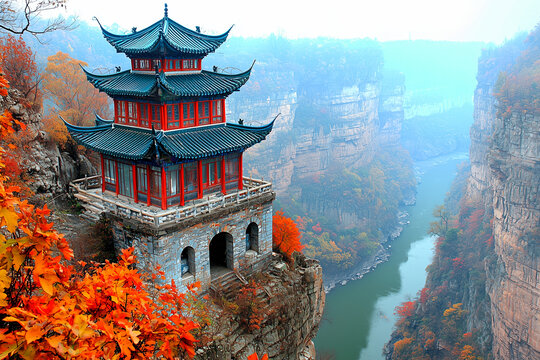
Pagoda At Haiqing Temple.
Tickets: Prices, Booking, and Tips
When planning your visit to the Pagoda at Haiqing Temple (海清寺塔), it’s essential to be informed about ticket options, pricing, and booking procedures. Here’s a convenient breakdown to help you navigate your visit smoothly.
| Ticket Type | Price (CNY) | Includes |
|---|---|---|
| Adult Admission | 30 | Access to the pagoda and surrounding grounds |
| Student Admission | 15 | Access to the pagoda (valid ID required) |
| Group Admission (10+) | 25 per person | Access to the pagoda and grounds (pre-booking required) |
How to Book
Booking in advance is highly recommended, especially during peak tourist seasons or holidays. You can purchase your tickets through the following methods:
-
Online Booking: Visit the official Haiqing Temple website or popular travel platforms like Trip.com or Klook to secure your tickets in advance. This method saves time and guarantees entry on your chosen date.
-
Local Travel Agencies: If you’re already in China, local travel agencies can assist with ticket purchases and may offer guided tours of the pagoda.
-
On-site Purchase: While tickets can be bought at the entrance, availability may be limited, particularly on weekends and holidays. To avoid disappointment, opt for advance booking whenever possible.
Tips for a Hassle-Free Visit
- Check Opening Hours: Before your visit, verify the temple’s opening hours, as they may vary seasonally.
- Bring Identification: If you’re a student, ensure you carry your student ID to avail the discounted rate.
- Visit Early: Arriving early will help you avoid crowds and enjoy a more peaceful experience while exploring the pagoda and its surroundings.
By planning ahead and booking your tickets in advance, you can ensure a memorable visit to the stunning Pagoda at Haiqing Temple.
How to Get There: A Complete Transportation Guide
Getting to the Pagoda at Haiqing Temple
Visiting the Pagoda at Haiqing Temple (海清寺塔) offers an enriching glimpse into China’s rich history and architectural marvels. To fully enjoy this experience, understanding how to reach this attraction is essential. Here’s a comprehensive guide on transportation options from nearby major cities and getting around the scenic area.
From the Nearest Major City
Hangzhou
Hangzhou is the closest major city to Haiqing Temple, approximately 200 kilometers away. Here are your transportation options:
-
By Train: Take a high-speed train from Hangzhou East Railway Station to Lishui Railway Station. The journey lasts about 1.5 to 2 hours. Train tickets generally cost between 80 to 150 CNY (approximately $12 to $22) depending on the class of service. Once you arrive at Lishui, you can take a taxi or local bus to reach Songyang County.
-
By Bus: Long-distance buses from Hangzhou’s West Bus Station to Songyang County operate regularly. The trip takes around 3 to 4 hours, with tickets priced at approximately 60 to 100 CNY (about $9 to $15). From Songyang, taxis or local buses can take you to Haiqing Temple.
-
By Car: Renting a car or hiring a private vehicle can be a flexible option. The drive from Hangzhou to Haiqing Temple takes about 3 hours. The cost will vary based on rental rates and fuel prices, but expect to pay around 300 to 500 CNY ($45 to $75) for a one-day rental plus fuel.
Yiwu
If you’re coming from Yiwu, here are your options:
-
By Train: High-speed trains run between Yiwu Railway Station and Lishui Railway Station, taking about 1 hour. Ticket prices range from 40 to 80 CNY ($6 to $12). After arriving in Lishui, take a taxi or bus to Songyang County.
-
By Bus: Buses from Yiwu to Songyang take about 2 to 3 hours and typically cost around 40 to 70 CNY ($6 to $10). From Songyang, local transport can take you to Haiqing Temple.
-
By Car: Driving from Yiwu to Haiqing Temple takes roughly 2 hours. The cost for a rental vehicle or a private transfer will be similar to the rates mentioned for Hangzhou.
Getting Around the Scenic Area
Once you arrive at Haiqing Temple, the area surrounding the pagoda is beautifully designed for exploration. Here’s how to navigate:
-
Walking: The scenic area is pedestrian-friendly, and walking is the best way to soak in the serene atmosphere and admire the architectural beauty of the temple and its surroundings.
-
Local Buses: For those looking to explore further afield, local buses connect various sites in Songyang County. Check schedules at the Songyang County Bus Station for routes and fares.
-
Taxis and Ride-Sharing: Taxis are readily available in Songyang County. You can also use ride-sharing apps if available in the area. A typical taxi fare from Songyang County to Haiqing Temple should cost around 20 to 30 CNY ($3 to $5).
Tips for a Smooth Journey
- Language: English is not widely spoken, so having a translation app or a phrasebook can be helpful.
- Cash: While larger establishments may accept credit cards, many local shops and restaurants prefer cash. Ensure you have sufficient Chinese Yuan on hand.
- Timing: Plan your visit during daylight hours to fully appreciate the scenic beauty and architecture of the temple.
With these transportation options and tips, you are well-equipped to embark on your journey to the Pagoda at Haiqing Temple. Enjoy your exploration of this historic site!
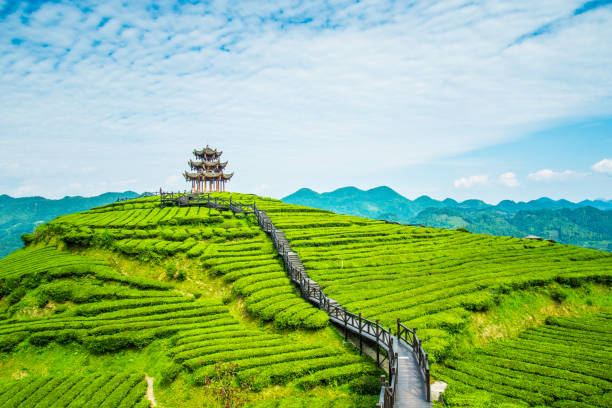
Pagoda At Haiqing Temple.
Local Cuisine and Accommodation Nearby
When visiting the Pagoda at Haiqing Temple, not only will you be enchanted by its historical significance and architectural beauty, but you’ll also have the opportunity to indulge in the local cuisine and find accommodations that suit your travel needs.
Culinary Delights
-
Songyang Rice Noodles (松阳米粉)
A must-try dish in Songyang County, these rice noodles are renowned for their smooth texture and are typically served in a flavorful broth, often accompanied by tender slices of meat and vibrant greens. The dish is both hearty and comforting, ideal for a post-exploration meal. -
Braised Bamboo Shoots (炖竹笋)
Fresh bamboo shoots are a local delicacy, often braised to perfection with a mix of soy sauce, ginger, and garlic. The result is a tender dish that captures the essence of the region’s natural flavors, making it a delightful accompaniment to rice or noodles. -
Steamed Fish with Spices (香蒸鱼)
Showcasing the region’s access to fresh fish, this dish is typically prepared with simple yet aromatic spices. The fish is steamed and served with a drizzle of soy sauce and a sprinkle of scallions, offering a light and flavorful option that highlights local culinary techniques. -
Tea Eggs (茶叶蛋)
A popular street food, tea eggs are hard-boiled eggs simmered in a mixture of soy sauce, black tea, and spices. The marbling from the tea creates an appealing presentation, and the savory flavor makes them an excellent snack while exploring the area.
Nearby Accommodations
-
Luxury Option: Songyang International Hotel
For those seeking a lavish stay, the Songyang International Hotel offers a blend of modern comfort and traditional Chinese hospitality. Located just a short drive from Haiqing Temple, it features elegant rooms, an on-site restaurant serving local and international cuisine, and amenities such as a spa and fitness center. -
Boutique Choice: The Courtyard Inn
If you prefer a more intimate setting, The Courtyard Inn is a charming boutique hotel that captures the essence of local architecture. With personalized service, beautifully decorated rooms, and a homey atmosphere, it’s perfect for travelers looking for a unique experience close to cultural attractions. -
Budget-Friendly Stay: GreenTree Inn
For budget-conscious travelers, GreenTree Inn provides comfortable accommodations without breaking the bank. This hotel offers clean, simple rooms and convenient access to local eateries and attractions, making it a practical choice for those planning to explore the area extensively.
With a variety of local dishes to savor and a range of accommodations to choose from, your visit to the Pagoda at Haiqing Temple will be enriched by the flavors and comforts of Songyang County. Enjoy your culinary and cultural adventure!
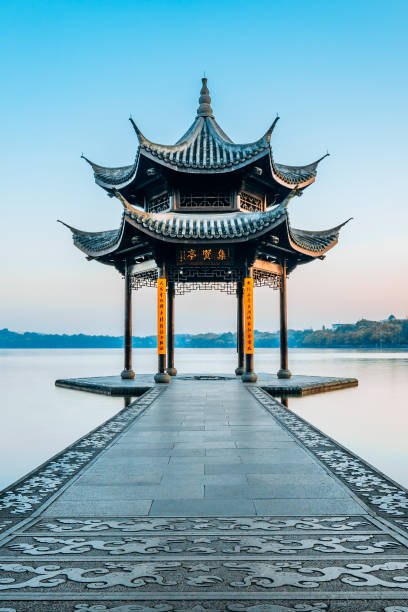
Pagoda At Haiqing Temple.
Frequently Asked Questions
Frequently Asked Questions about Pagoda At Haiqing Temple
1. Is the Pagoda at Haiqing Temple suitable for children and the elderly?
Yes, the Pagoda is accessible for both children and elderly visitors. However, it’s important to note that the site does feature some uneven terrain and steps, so those with mobility issues should take caution. Children will enjoy exploring the surrounding area, but adult supervision is recommended.
2. Are there English signs available at the Pagoda?
Yes, there are English signs throughout the Pagoda and the temple grounds. This makes it easier for international visitors to navigate and understand the historical significance of the site.
3. How much time should I plan to visit the Pagoda?
A typical visit to the Pagoda at Haiqing Temple can take about 1 to 2 hours. This allows you enough time to explore the structure, take photos, and enjoy the beautiful surroundings. If you wish to soak in the atmosphere or meditate, consider allowing more time.
4. Is there an entrance fee to visit the Pagoda?
No, there is no entrance fee to visit the Pagoda at Haiqing Temple. This makes it an excellent choice for travelers looking for an enriching experience without the cost.
5. Are there any facilities available on-site?
While the Pagoda itself does not have extensive facilities, there are basic amenities such as restrooms nearby. You may want to bring your own water and snacks, especially if you plan to spend a bit more time enjoying the area.
6. What is the best time of year to visit the Pagoda?
The best time to visit is during spring (March to May) or autumn (September to November) when the weather is mild and the scenery is particularly beautiful. The lush greenery surrounding the Pagoda is especially vibrant during these seasons.
7. Is photography allowed within the Pagoda premises?
Yes, photography is allowed, and visitors are encouraged to capture the stunning architecture and serene environment. Just be respectful of other visitors and the sacred nature of the site when taking photos.
8. How do I get to the Pagoda at Haiqing Temple?
The Pagoda is located in Songyang County, easily accessible by public transport or taxi from nearby cities. If you’re traveling from a major city, consider arranging a private transfer or joining a guided tour for convenience.
Final Thoughts on Your Trip
Visiting the Pagoda at Haiqing Temple is more than just a sightseeing venture; it’s an immersion into centuries of history and culture. Standing tall at 38.32 meters, this remarkable structure, often referred to as the “East Pisa Leaning Tower,” invites travelers to marvel at its unique tilt and the stories etched into its wooden framework since the 9th century. Surrounded by lush greenery, the pagoda offers a serene atmosphere that encourages reflection and appreciation for the rich heritage of the Northern Song Dynasty.
As you conclude your journey, let the echoes of the past resonate within you. Every corner of this ancient site tells a tale—a reminder of resilience against time’s passage. Whether you’re an avid historian or simply a curious traveler, the Pagoda at Haiqing Temple promises to enrich your experience in Songyang County. Embrace the beauty of this historical gem and carry its spirit with you as you continue your travels. Remember, every adventure has the potential to inspire; let this one be a stepping stone to discovering more of the world’s wonders. Safe travels!